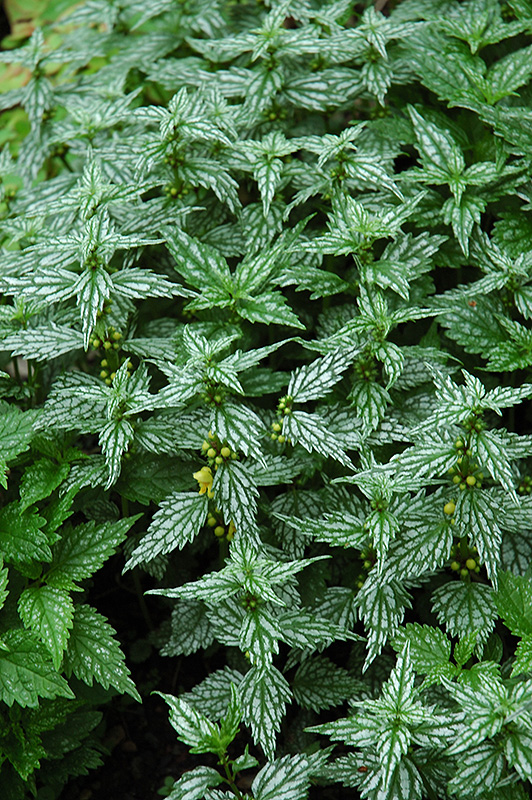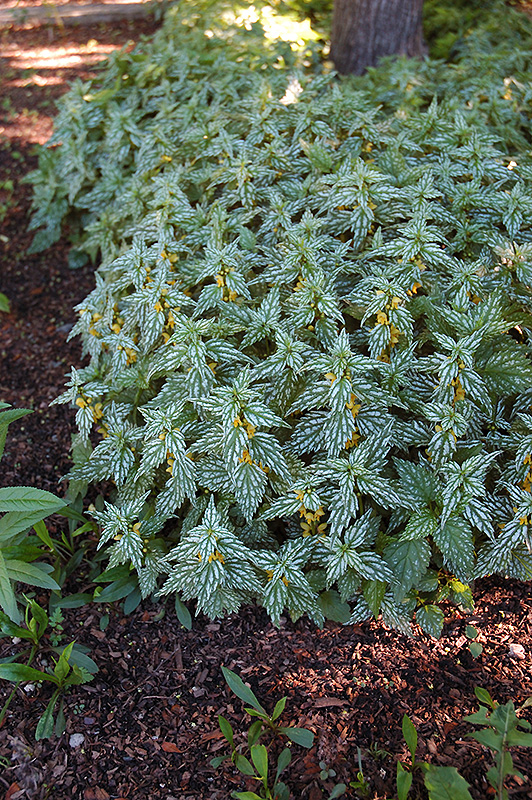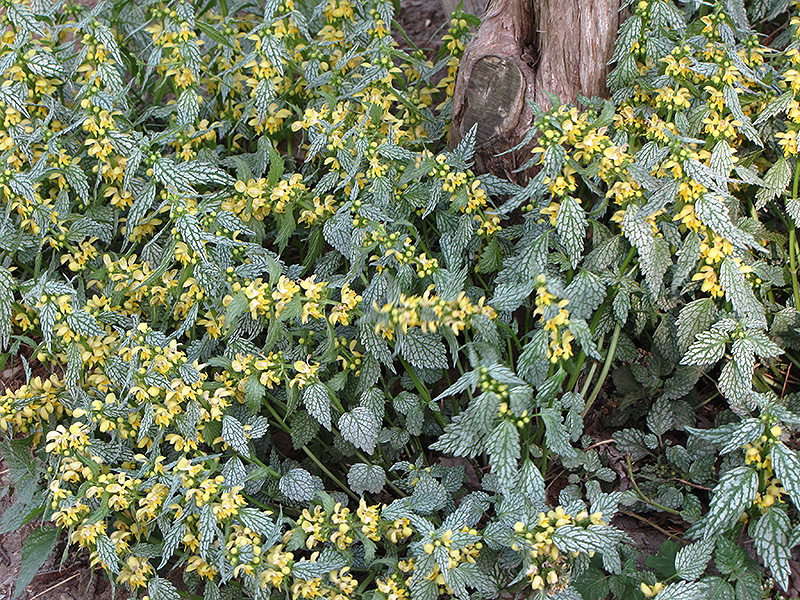Plant Finder
Hermann's Pride Yellow Archangel
Lamiastrum galeobdolon 'Hermann's Pride'

Hermann's Pride Yellow Archangel foliage
Hermann's Pride Yellow Archangel foliage
(Photo courtesy of NetPS Plant Finder)

Hermann's Pride Yellow Archangel in bloom
Hermann's Pride Yellow Archangel in bloom
(Photo courtesy of NetPS Plant Finder)

Hermann's Pride Yellow Archangel in bloom
Hermann's Pride Yellow Archangel in bloom
(Photo courtesy of NetPS Plant Finder)
Height: 12 inches
Spread: 18 inches
Sunlight:
![]()
![]()
Hardiness Zone: 2
Other Names: False Lamium
Ornamental Features
Hermann's Pride Yellow Archangel features subtle spikes of yellow flowers rising above the foliage in mid spring. Its attractive serrated narrow leaves remain silver in color with distinctive dark green veins throughout the season.
Landscape Attributes
Hermann's Pride Yellow Archangel is a dense herbaceous perennial with a ground-hugging habit of growth. Its relatively fine texture sets it apart from other garden plants with less refined foliage.
This is a relatively low maintenance plant, and is best cleaned up in early spring before it resumes active growth for the season. Deer don't particularly care for this plant and will usually leave it alone in favor of tastier treats. It has no significant negative characteristics.
Hermann's Pride Yellow Archangel is recommended for the following landscape applications;
- Mass Planting
- Border Edging
- General Garden Use
Planting & Growing
Hermann's Pride Yellow Archangel will grow to be about 12 inches tall at maturity, with a spread of 18 inches. Its foliage tends to remain dense right to the ground, not requiring facer plants in front. It grows at a medium rate, and under ideal conditions can be expected to live for approximately 10 years. As an herbaceous perennial, this plant will usually die back to the crown each winter, and will regrow from the base each spring. Be careful not to disturb the crown in late winter when it may not be readily seen!
This plant does best in partial shade to shade. It is an amazingly adaptable plant, tolerating both dry conditions and even some standing water. It is considered to be drought-tolerant, and thus makes an ideal choice for a low-water garden or xeriscape application. It is not particular as to soil type or pH. It is highly tolerant of urban pollution and will even thrive in inner city environments. This is a selected variety of a species not originally from North America. It can be propagated by division; however, as a cultivated variety, be aware that it may be subject to certain restrictions or prohibitions on propagation.
A NetPS Plant Finder tool
